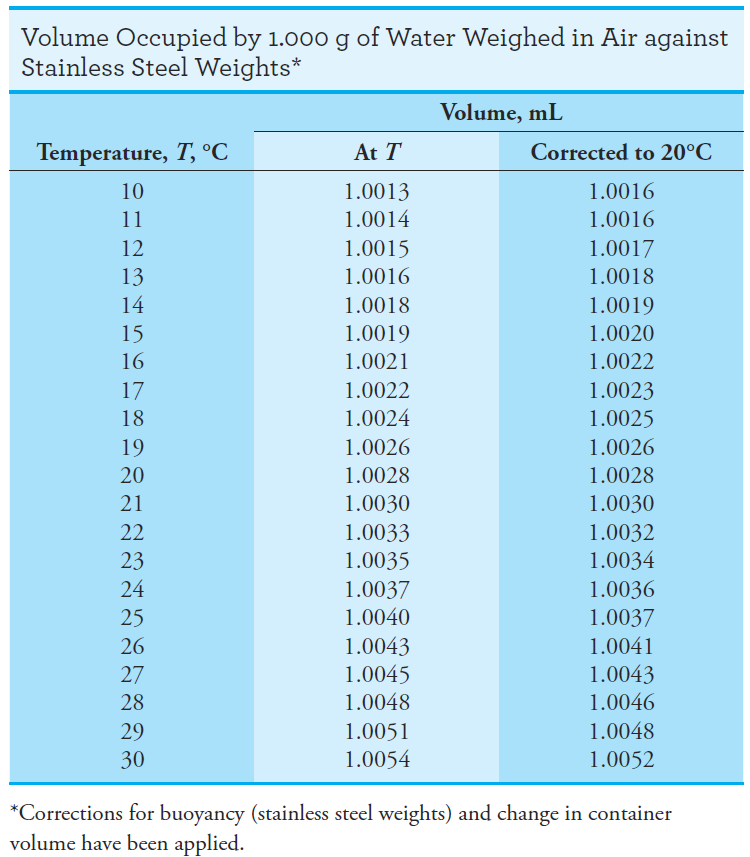
Calibrating a Buret
 المؤلف:
D. A. Skoog, F. J.Holler, D M. West, and S. R. Crouch
المؤلف:
D. A. Skoog, F. J.Holler, D M. West, and S. R. Crouch
 المصدر:
Fundamentals of Analytical Chemistry
المصدر:
Fundamentals of Analytical Chemistry
 الجزء والصفحة:
9th ed - p44
الجزء والصفحة:
9th ed - p44
 8-8-2016
8-8-2016
 1315
1315
Calibrating a Buret
Fill the buret with temperature-equilibrated water and make sure that no air bubbles are trapped in the tip. Allow about 1 minute for drainage, and then lower the liquid level to bring the bottom of the meniscus to the 0.00-mL mark. Touch the tip to the wall of a beaker to remove any adhering drop. Wait 10 minutes and recheck the volume. If the stopcock is tight, there should be no perceptible change. During this interval, weigh (to the nearest milligram) a 125-mL conical flask fitted with a rubber stopper.
Once tightness of the stopcock has been established, slowly transfer (at about 10 mL/min) approximately 10 mL of water to the flask. Touch the tip to the wall of the flask. Wait 1 minute, record the volume that was apparently delivered, and refill the buret. Weigh the flask and its contents to the nearest milligram. The difference between this mass and the initial value is the mass of water delivered.
Use Table 1-1 to convert this mass to the true volume. Subtract the apparent volume from the true volume. This difference is the correction that should be applied to the apparent volume to give the true volume. Repeat the calibration until agreement within 60.02 mL is achieved. Starting again from the zero mark, repeat the calibration, this time delivering about 20 mL to the receiver. Test the buret at 10-mL intervals over its entire volume. Prepare a plot of the correction to be applied as a function of volume delivered. The correction associated with any interval can be determined from this plot.
Table 1-1

 الاكثر قراءة في التحليل النوعي والكمي
الاكثر قراءة في التحليل النوعي والكمي
 اخر الاخبار
اخر الاخبار
اخبار العتبة العباسية المقدسة


